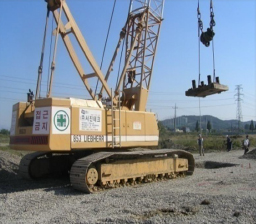Environmental Service
1. dynamic compaction
The dynamic compactio (DC)technique has been proven very effective in densification of loose soil within certain depth. The DC technique involves using a crane to drop weights of between 5 to 20 tons, from heights of up to 20m.
As a result the technique is best suited to large, open sites where few obstructions are present.
The impact of the dropped weight induces settlement depths according to the weight and drop height. the ground is treated by repeatedly dropping the weight onto individual footprints which are arranged on a grid pattern.
Treatment is normally carried out on a number of ‘passes’ with the weight being.

2. dynamic replacement
The main idea behind dynamic replacement (DR) is to penetrate and replace loose and soft soils with dense coarse material.
This will lead to a faster dissipation of pore water pressure.
In the DR method, columns of large diameter (say 2.5m )are formed with granular material in the upper compressible and week soils.
This technique is similar to the dynamic compaction, but in this case, pounding is used to form large diameter granular pillars through the soft soils to underlying dense bearing stratum.

3. hydraulic compaction
The hydraulic compaction (HC) technique having the same principle, has been proven very effective in densification of loose soil within shallow depth(3.0~2.5m) in short period.
The HC technique involves using a crane to setup a hydraulic hammer of 7 to 20 ton weight with a footer, from heights of 1 or 1.5m.
As a result the technique is best suited to silty fine sand formation reducing residual settlement.
